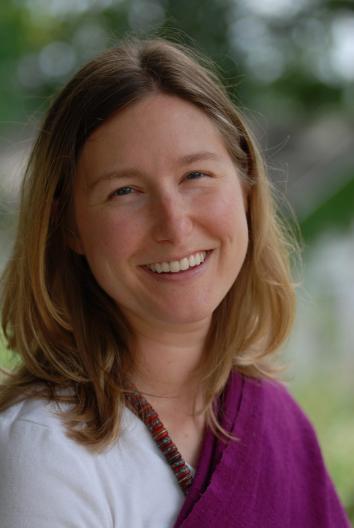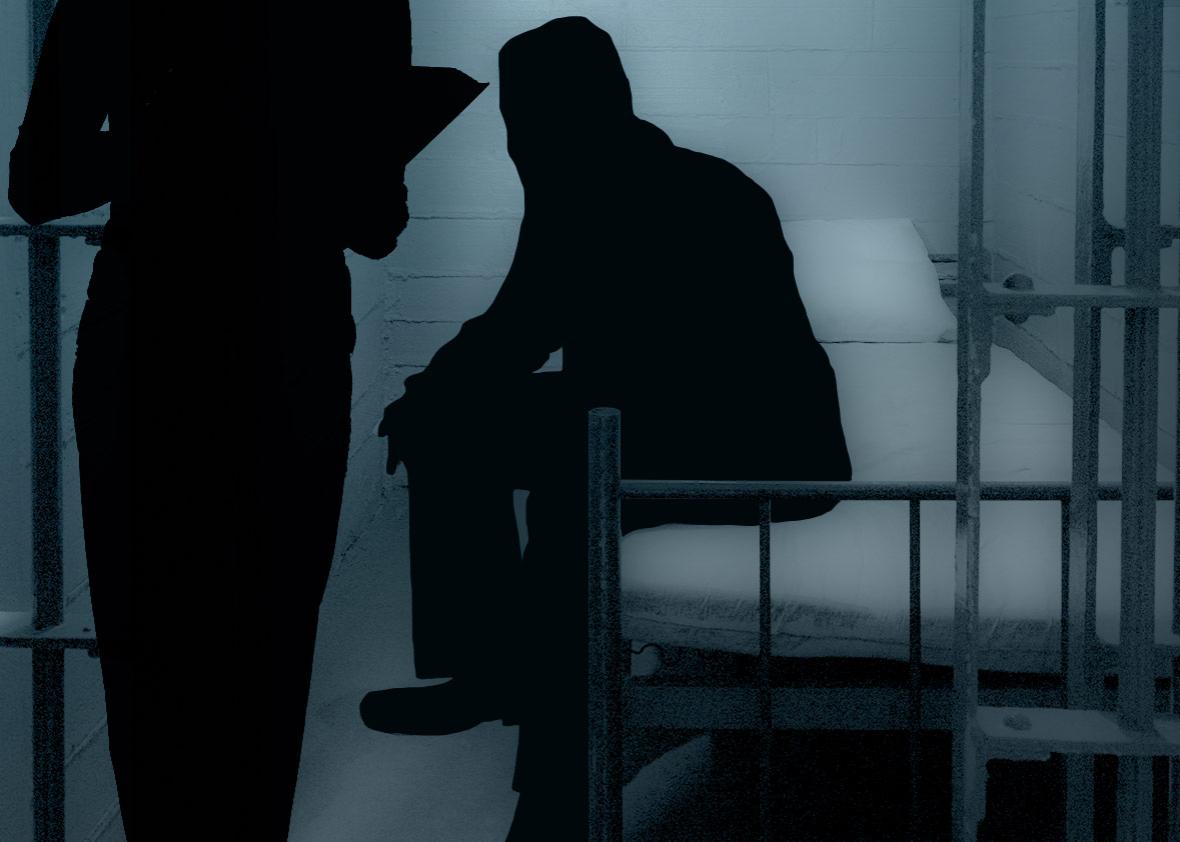Just before his execution in Arkansas on April 24, Jack Jones ate a final meal of fried chicken, potato logs with tarter sauce, beef jerky bites, three candy bars, a chocolate milkshake, and fruit punch—or at least that’s what was reported in the news. But it’s not true.
According to the only person who sat with Jones as he waited to die, what he really ate was a small serving of the potato logs and a melted chocolate shake—an account confirmed by the official internal affairs log of the execution. There was no chicken. Jones asked for it but didn’t get it.
“He had a very small last meal that was rushed. He was being told every few minutes to hurry up,” said Morgan Holladay, who served as Jones’ spiritual adviser in his final days—an end-of-life relationship permitted to death row inmates by Arkansas law.
For many Americans, last month’s executions of Jones and three other men in Arkansas epitomized our larger debate over capital punishment. There was the pending expiration of midazolam, one of the drugs used in lethal injection; multiple stays by the courts; and a tie-breaking vote from Supreme Court Justice Neil Gorsuch that cleared the way for the spate of executions. But while all this drama played out, Holladay was helping Jack Jones prepare to die.
Holladay, 30, had never seen someone die before Jones’ execution. She runs an organization, Compassion Works for All, that teaches meditation and conflict resolution in Arkansas prisons, so she was used to being around inmates, but never one on one and never on death row. In prison, Jones, a convicted rapist and murderer, became a Buddhist. His Zen Buddhist teacher, Harada Roshi, was leading a retreat in Europe and couldn’t be at the execution, so Holladay, a Tibetan Buddhist practitioner and trained social worker, hesitantly stepped in. Because she believes Jones wanted the world, and his victims’ families, to know that he had changed, she agreed to share her experience.
Buddhists work to tame their minds and overcome fear and hatred. The idea is to decrease suffering and increase compassion. As a spiritual adviser, Holladay believed her role was to be present with Jones as he was in the moment, and to suspend judgment of who he was in the past.
She met with Jones twice. During the first visit, five days before his execution, Holladay waited alone in a prison cell. She had heard he was a little gruff and could be challenging to work with. “It seemed like a lot could go wrong,” she told me.
Jones was diabetic, and while in prison one of his legs was amputated. He finally arrived, in a wheelchair. “As soon as I saw Jack all of my fears just melted away,” Holladay said. “Oh, he’s a person, OK.” But Jones was surprised by Holladay’s youth. “He kind of freaked out,” she said. “ ‘I don’t want to put you through this’ is what he said.” Holladay thanked him for his concern.
The second time Holladay met Jones was on the day he died. She arrived as he was taping pictures of his adult daughter into a scrapbook. He had met his daughter for the first time the day before, though they had been corresponding for a few years. Jones and his first wife put their daughter up for adoption when she was young. “They didn’t think they could afford to have her and give her a good life,” Holladay said.

Courtesy of Morgan Holladay
Most of what Holladay knows about Jones she learned during the two days she spent with him, when all he wanted to do was talk about his life. “Somehow in telling me his experience it was like this prolonged apology,” Holladay said. He told her about the trauma of his youth, about the people who shaped his life, about his horrible crimes—when he raped and murdered a mother and beat her 11-year-old daughter, and when he raped and murdered a second woman in Florida.
Holladay sat and listened to everything he said.
* * *
In his book Old Path White Clouds, the Vietnamese Zen Buddhist monk Thich Nhat Hanh writes about the Buddha’s encounter with a serial killer. One day, while the Buddha was out walking, a brutal killer approached him and demanded he stop, but the Buddha kept walking with ease. This frustrated the killer, and he demanded to know why the Buddha didn’t stop. The Buddha told him, “I stopped a long time ago. It is you who has not stopped.” The killer, confused, looked into the Buddha’s eyes and realized he had never seen such serenity and compassion. That was the day the killer stopped killing and vowed never to harm another being.
“This idea that we should be stuck, or that we should stick people in one place and say, ‘You can’t move emotionally and physically,’ is totally crazy,” Holladay told me. “We’ve all done terrible things and sometimes they are illegal, and sometimes they’re just terrible, and not illegal.”
The way she understands it, when Jones committed the rapes and homicides, he was in the throes of bipolar disorder and was self-medicating with drugs and alcohol. “He was out of control” and was perpetuating the harm he had experienced as a child, she said. There are degrees, of course. Murdering someone is worse than stealing or selling drugs, which is worse than running a red light. But Holladay possesses an unusual capacity to view such actions not in terms of a person’s guilt or worthiness, but instead in terms of the person’s need for healing.
Jones told Holladay he was disgusted by his crimes. “I can’t believe that’s what I did, but I did do it.” Holladay said he was adamant about taking responsibility, but she didn’t know how he lived his life. “I can only report what he said to me in his last days,” she said. But she felt his desire to not harm others was genuine. “He had that intention, and that is the way he saw himself.”
She saw Jones cry only once. On the day of his execution he was lying down as the head prison chaplain held a cellphone to his ear and played a 12-minute recording of Jones’ Zen Buddhist teacher, Harada Roshi. The recording was in Japanese, and even though Jones couldn’t understand the words, he cried at the sound of his teacher’s voice. Afterward, Holladay read him a translation. “We have done confession and repentance and prostrations in the prison cell together. That which has to be done, we did. Now this time has come.” His teacher said that all of his students knew about Jones and that if he wanted, Roshi would pick up his ashes so that they could be placed next to Roshi’s when he died.
Later on, Jones was wheeled off to the infirmary. He had agreed to have stents placed in his veins “to make this as easy as possible for the state.”
“He knew that his death was stirring up a lot for the victims’ family,” Holladay said. “He also had a very strong sense that his death was going to be painful and potentially traumatic for everyone involved”—the executioner, the medical professionals who placed his IV, the director of the Arkansas Department of Correction—“everyone was complicit in his killing and he knew it wasn’t good for them. As someone who had killed, he knew that.”
The operation took longer than expected. Jones was wheeled back into the cell with Holladay an hour and a half before his execution. In that time he was to eat, change into starched white pants and shirt, and write his last words. But the drugs hadn’t worn off from the operation.
“He could barely stay awake,” Holladay said. “He would start to talk to me and then his words would get sort of jumbled and then he would be passed out.
“Mostly what I was thinking was, where is the dignity?” she said.
Holladay was upset later when she read the news accounts of a gluttonous-sounding final meal, which she felt added to a narrative that Jones was a monster. “For some reason people are just obsessed with what others are eating as their last meal,” she told me. “It’s kind of this sick fascination. And it was wrong.”
When it was time, Holladay was escorted to a dimly lit room with a black curtain covering a big window in the wall. All the chairs were facing the window.
“It was almost like a twisted theater, but once the curtain was pulled back, that room looked sterile,” Holladay said. “It looked like we were peeking into some sort of medical procedure.”
Jones lay on the gurney, his eyes closed, and before the drugs were administered, he spoke his last words. “I’m so sorry,” he said to the daughter he had beat, calling her by name. “Try to understand I love you like my own child.”
Once alone again, Holladay was able to reflect. What Jones did was really hard to deal with.
She told me, “We could just go in circles for a really long time, forever and ever, but at some point, we have to make the conscious decision to wake up and to begin to heal rather than continue to cause harm.
“All those people hungry for blood, that is your shadow. What is the difference from you wanting to see someone murdered, than Jack murdering someone? It’s the same thing. It’s the same seed.”
And it will continue to grow, until we stop.
